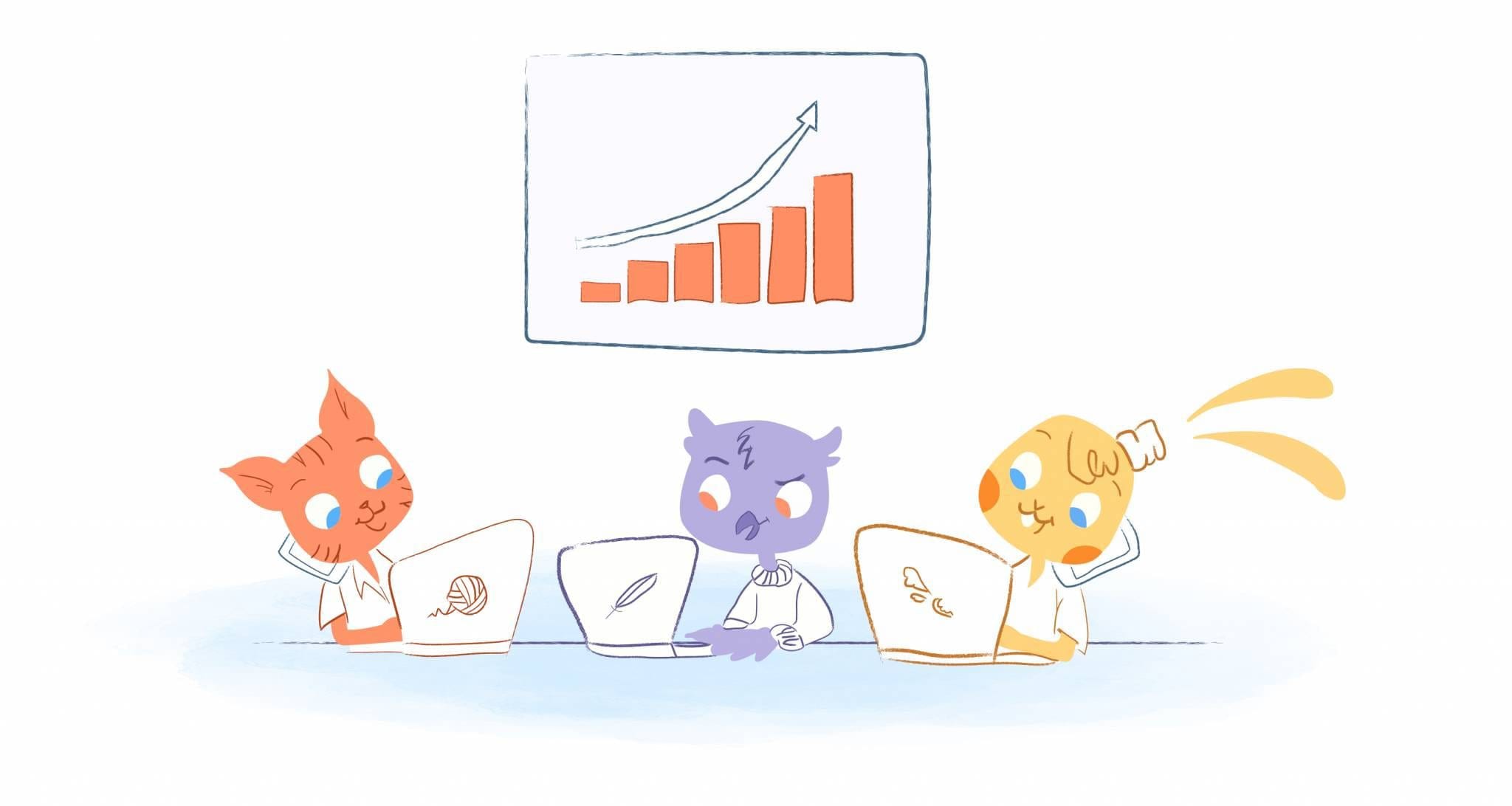

Most of us spend a ridiculous amount of time in meetings. While this can vary, if you’re in middle management, it’s probably around 35% of your time. For upper management? That figure jumps to 50%. It’s also been found that the average person spends 12 hours per week preparing and attending meetings.
And, here’s where things get ugly. A majority of these meetings are considered unproductive. As a result, they cost organizations a staggering $37 billion annually — some figures go as high as $1.4 trillion! Even worse, these bad meetings are considered the top time-waster at work. And, they are also cited as the number one complaint employees have at work.
There’s also the psychological cost attached to meetings. For starters, meetings can add additional stress and anxiety to an already stressed-out workforce. For example, an employee may be nervous that they’re going to miss a deadline because they’ve been in meetings all day. Or, someone else may has a fear of doing a presentation to their co-workers.
Excessive meetings can also result in information overload and a sense of failure. As if that weren’t enough, they’re distracting and force you to multitask. All of these aren’t good for your cognitive health.
And, there’s also a link between your mental and physical health. Stress and anxiety, for instance, can lead to heart problems. Also, since we’re already sitting for 12 hours per day, do we need to sit any longer in pointless meetings?
It may seem like I’m hating on meetings. But, they’re still necessary. The key is scheduling the perfect amount of meetings for your team and goals. It also wouldn’t hurt that they’re more effective as well.
How Many Meetings a Day is Too Many?
On average, meetings last between 31 to 60 minutes. So, theoretically, in an 8 hour day, you could squeeze in between 8 to 16 meetings. Of course, you’re not a machine. You still need to take breaks so that you can prepare, eat, go to the bathroom, or even travel between meetings.
Right off the bat, it wouldn’t be just too ambitious to plan anything close to these figures. I would even say it would be impossible if meetings go past the hour mark.
We also need to take into consideration the fact that the average worker is only productive for 2 hours and 53 minutes. Why? Because they’re spending time on social media, reading websites, chatting with co-workers, texting/instant messaging, and making food or drinks. Not all of this is the best use of their time. But, we only have so much energy throughout the day. In short, we need these breaks to keep us refreshed.
With that in mind, if you’re only actually working for around 3 hours per day, then you don’t want to spend that time in meetings. Even two-hour-long appointments would only give you an hour to focus on your work.
What’s the magic number on meetings per day?
Well, that depends. Paul Graham argues that if you’re operating on a maker’s schedule, “meetings are a disaster.” Even a “single meeting can blow a whole afternoon by breaking it into two pieces, each too small to do anything hard in.”
Besides, you also “have to remember to go to the meeting.” While those operating on a manager’s schedule shouldn’t have that problem since they have a set schedule, makers “have to think about it.”
For those in the C-Suite, however, that’s a different story. “Generally speaking, the more hats you wear at work, the more meetings you’re expected to attend,” Kris Duggan, owner, co-founder, and CEO of BetterWorks, told Business Insider. CEO’s and business owners usually spend a majority of their time in boardrooms. Obviously, that doesn’t leave them much time for anything else.
Duggan’s solution is to schedule no more than two or three meetings in the afternoon. The mornings are reserved for uninterrupted time.
“I know when I’m attending meeting after meeting, my mindset shifts to become task-oriented versus thinking critically and novelly,” said Duggan. “Attending meeting after meeting forces you into checklist mode. When you’re running a business, at least part of your day has to be devoted to the future of the company and attending to meeting ambitious goals. Unless every meeting remains focused on those things, it’d be impossible to achieve everything at the same time.”
No Meeting Wednesdays vs. batching.
Some organizations have even made it a policy to establish a meeting-free day per week. Asana, for example, does this on Wednesdays. As a result, everyone can concentrate on their work.
Some companies prefer to schedule all of their meetings on the same day(s) every week. Maybe only scheduling meetings on Tuesdays and Thursdays. The science behind this is pretty straightforward. Our brains just weren’t wired to multitask and always switch between tasks. When you batch tasks together, you’re able to increase your focus, remove distractions, and stay in the right flow state. It also makes scheduling easier.
If you do batch your meetings, the most optimal day and time are Tuesdays at 2:30 p.m. If that’s not possible, then mid-afternoon and mid-week meetings are your best options. You usually want to avoid morning meetings early in the week because that’s when people are most productive. And, by Friday, everyone is beginning to clock-out for the weekend.
It’s All About Quality: How to Make Your Meetings Per Productive
I wish I had an exact answer for you. But, the truth is, the perfect amount of meetings per day varies based on factors like your position and how long each session lasts. It’s also decided by your schedule and goals, as well as those of your team.
One way to determine this is to seek feedback from your team. You could either send out a survey or conduct a poll asking them how many meetings are ideal for them. It may not please everyone. But, it may keep the bulk of your team satisfied.
In my opinion, if you must schedule meetings daily, I wouldn’t only do one or two. And, they should both be scheduled for the afternoon since this when your energy begins to dip.
But, I think instead of worrying about the number of meetings you have every day, you start focusing on how to make them more productive. Here are some of the best ways to make meetings more productive that are backed by science:
- Keep meetings under 20-minutes. It’s enough time to be taken seriously, but short enough to maintain people’s attention. It also doesn’t interfere too much with everyone’s busy schedule.
- Thanks to Parkinson’s law of triviality, which argues that groups of people often give disproportionate weight to pointless discussions, invite fewer than eight people.
- Provide refreshments to fuel attendees.
- Stick to between 3-7 talking points so that your presentation will be more memorable.
- Encourage attendees to stand-up. Or have a walking meeting.
- And, make sure that you create and send out a purposefully constructed agenda.
Moreover, I would reduce the amount of meeting you have per day by filtering out unimportant or standing meetings. Instead, you can reject these requests or suggest alternatives. Some of the most popular options would, through email, online chats, collaboration apps, or virtual meetings.
You could also consider more one-on-one meetings instead of bringing together your entire team. And, you could create FAQ sheets, Wikis, or videos that your team can access for recurring questions or problems.
[Related: Meeting Checklists Help You Decide if a Session is Needed]











Deanna Ritchie
Editor-in-Chief at Calendar. Former Editor-in-Chief and writer at Startup Grind. Freelance editor at Entrepreneur.com. Deanna loves to help build startups, and guide them to discover the business value of their online content and social media marketing.